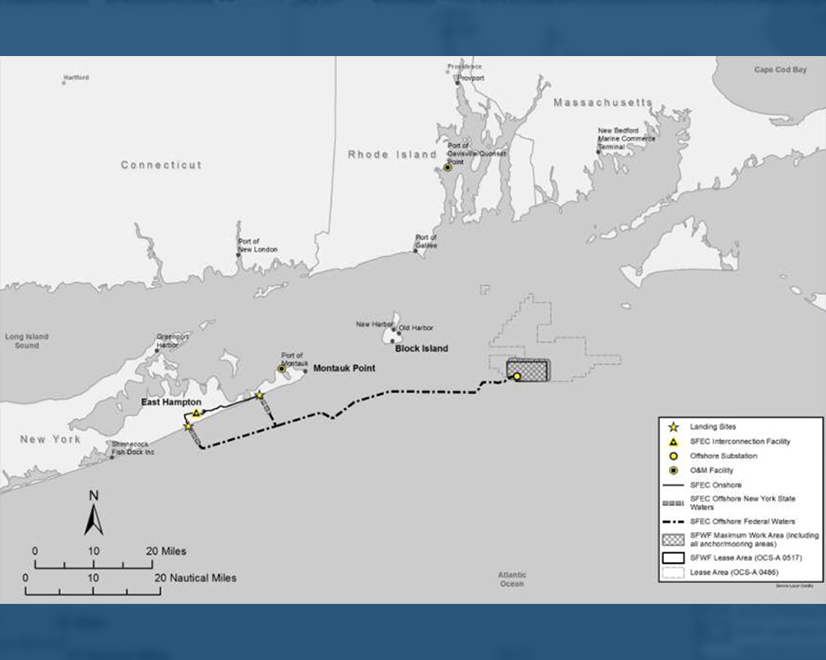The Bureau of Ocean Energy Management (BOEM) is considering a construction plan for the 132-MW South Fork offshore wind project that protects fishery habitat by reducing the number of planned turbine locations.
BOEM said Monday that it received habitat conservation recommendations from the National Oceanic and Atmospheric Administration (NOAA) that would somewhat alter the project as proposed by co-developers Ørsted and Eversource Energy (NYSE: ES).
The companies are seeking approval to build the South Fork project 19 miles southeast of Block Island, R.I., and 35 miles east of Montauk Point, N.Y., with power delivery to Long Island.
In a final environmental impact statement (EIS) for the project, BOEM said the plan for “fisheries habitat impact minimization” is its preferred alternative of the four major project alternatives it is considering. The final EIS assesses the impacts of development activities for the project as set out in the project construction and operations plan.
In addition to the habitat mitigation alternative, BOEM also is considering the project as proposed, a vessel transit lane option, and a no-action option under which the project would not be built.
BOEM expects to announce its choice in a record of decision in October.
For the habitat protection option, BOEM said it “may approve up to four fewer [turbine] locations than proposed by [the developers].” NOAA said that five of the proposed locations should be “removed from consideration because they would result in substantial adverse impacts to complex habitats,” according to the final EIS. Special siting considerations also would apply to an additional nine proposed turbine locations and the offshore substation to accommodate various sea floor habitats.
If BOEM selects the habitat protection alternative, it would only affect the configuration of the turbine locations. The total number of turbines would still fall within the proposed design scope of “up to 15 turbines and the 6- to 12-MW range,” the final EIS said.
The developers submitted an alternative site plan based on NOAA’s suggestions that could, depending on the final layout and locations used, require redesign of the cable layout and specifications.
“South Fork Wind continues to advance steadily through the federal permitting process, and we’re pleased to reach this latest milestone, the issuance of BOEM’s final EIS,” Ørsted and Eversource said in a joint statement. “South Fork Wind remains on track to be fully permitted by early 2022, with construction activities ramping up soon after on this historic, New York-first offshore wind farm.”
The vessel transit option would include a 4-nautical-mile-wide lane through the project lease area “where no surface occupancy would occur,” according to the final EIS.
BOEM formed the alternative in response to a proposal submitted last year by the Responsible Offshore Development Association to accommodate vessels traveling from southern New England and eastern Long Island ports to fishing areas.
The project developers proposed installing wind turbines with a capacity of between 6 MW and 12 MW in up to 15 of a possible 18 locations on a 1-by-1 nautical-mile grid in the project area. The vessel transit lane would eliminate five possible turbine locations and the proposed offshore substation site from consideration for development.
BOEM said it is finalizing consultations under the National Historic Preservation Act and working with the National Marine Fisheries Service (NMFS) to complete a biological opinion required by the Endangered Species Act.
The U.S. Army Corp of Engineers and NMFS plan to adopt BOEM’s final EIS for their own separate decisions regarding the South Fork project.
